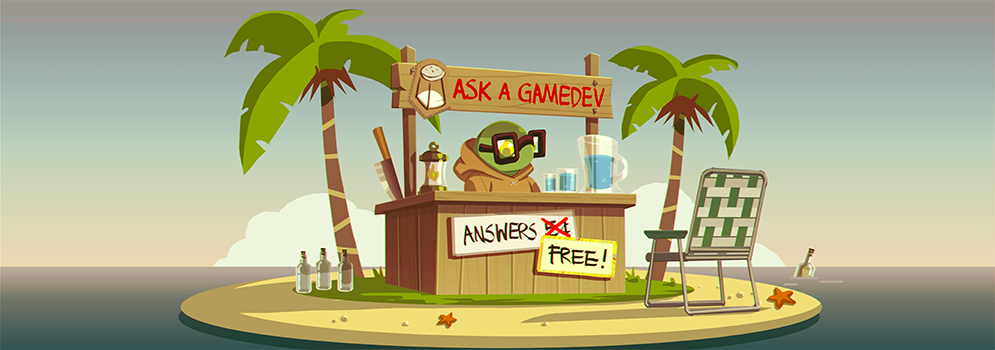Breaking Down Testing Chamber 16, part 2: Goals
This is a follow-up post to [this post about Testing Chamber 16 in Portal].
Today, we’ll be examining Testing Chamber 16 from a more designer-centric perspective. We’ve seen and enjoyed the finished product. Now the question to answer is “How does a level designer get from a list of conceptual level goals to that finished product while incorporating and maintaining the game’s overall themes?”
Let’s identify these conceptual level goals for Test Chamber 16 first:
- Introduce the sentry turret to the player
- Give the player the first major peek behind the curtain with the “survivor room”
These two goals are really all Test Chamber 16 needs to accomplish individually. We also, of course, need to maintain the overall game’s themes. We have established these themes to be:
- The world is built on the [scientific method]
- What is being shown is not altogether genuine
Imagine that you’re a level designer and tasked with creating TC16 with the goals listed. You have all of the pieces that you can use to build the level - the glass , portal-able materials (light grey tile), non-portal-able materials (metal tile), turret objects, and the various textured decals you can place on walls and floors like the infographics, painted Xs, and so on. How do we introduce a new element like a sentry turret to a player who has never seen one before?
There are several different ways to present the turret for the first time, each with its own implications. For example, we could introduce the sentry turret to the player by having it face the player down almost immediately and begin shooting, along with a safe space to avoid taking additional fire. This would clearly instill a sense of danger in the player associated with turrets. We could introduce the turret via a clearly visible laser beam first, allowing the player to approach it from safety and examine it from a distance before being shot at. The presence of danger is still there, but it is not as immediate and it is not as scary. There is nothing wrong with creating encounters like this! These type of encounters are used in TC16 after all - they just aren’t the very first encounter. The first encounter with a new gameplay element will greatly affect how they view the gameplay element in the future due to the qualities of the experience that are emphasized.
Instead of emphasizing the danger, the level designer chose to place the first turret in the game facing away from the player where the only way to take damage is by ignoring the turret completely and pushing past it. There is no way to bypass this turret without interacting with it in some way. The player may examine the turret and its attributes at their leisure, but it is also an obstacle that clearly blocks their path. If they try to bypass it, it will shoot them. Further, there is no real portaling to be done in this first chamber either. The glass and metal tiles block the use of portals, which severely limit the use. This is as safe an introduction to the turret as possible.
This is how the puzzle elements in Portal are generally presented - especially in the testing chambers portion of the game. Whenever the player is presented with a new puzzle element (like the sentry turret) and the player is encouraged (and initially forced, as above) to experiment and interact with the new puzzle element in varying ways to attempt to solve it. This follows along exactly with the theme of the scientific method. The puzzles generally add one new element to the test each time.
We should also note that each level in Portal testing chambers is a space where several puzzles are presented in a progressive sequence. Each interaction with the turrets teaches the player something new - what a turret looks like, how the turrets detect the player, how to recognize where a turret is, different ways of dealing with turrets, and ways of bypassing turrets. The experience/tension graph for the level looks something like this:
Observe that there are little tension spikes at each puzzle during the level and the stakes at each puzzle increase.
For sake of length, we really only tackled goal #1 above - “Introduce the sentry turret to the player”. As a bonus exercise, I encourage you to consider goal #2 yourself. If you’re feeling frisky, please reblog and add your own goal #2 breakdown with your observations and analysis! As a hint, consider where the “secret” room is placed, both in the level and in the tension curve. Why put it where it is? What would be the results of placing the “secret” room at different places along the progression through the level?
[Join us on Discord] and/or [Support us on Patreon]
The FANTa Project is being rebooted. [What is the FANTa project?]
Got a burning question you want answered?
- Short questions: Ask a Game Dev on Twitter
- Long questions: Ask a Game Dev on Tumblr
- Frequent Questions: The FAQ

